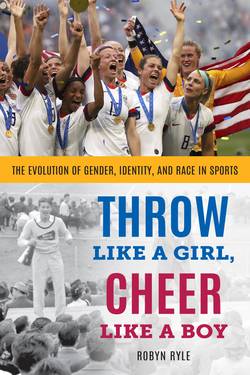Читать книгу Throw Like a Girl, Cheer Like a Boy - Robyn Ryle - Страница 18
На сайте Литреса книга снята с продажи.
How to Tell If a Woman
Is “Really” a Woman
ОглавлениеGender Testing and the Olympics
In 2009, South African runner Caster Semenya won the 800-meter race at the International Association of Athletics Federations (IAAF) World Championship, clocking the 13th fastest time in the history of the event. During live coverage of the race, a statement from the IAAF was read, stating that there were concerns that Semenya “does not meet the requirements to compete as a woman.”[1] The IAAF asked Semenya to refrain from competition even though they didn’t explain which requirements Semenya had failed to meet. While she waited to be cleared for competition, critics, competitors, and the media mocked Semenya as being too fast, too muscular, having a chest that was too flat, a jawline too square, a voice too deep, and hips too narrow.[2] A Time magazine headline asked of Semenya, “Could This Women’s World Champion Be a Man?”[3] In essence, Semenya was too good an athlete to be a woman. Semenya’s case, though certainly the most well-known example to date, is just the latest in a long history of gender testing for women in sports. There’s no parallel interest in making sure that the men competing are really men. What explains this concern with patrolling the gender line in women’s sports, but not men’s?
